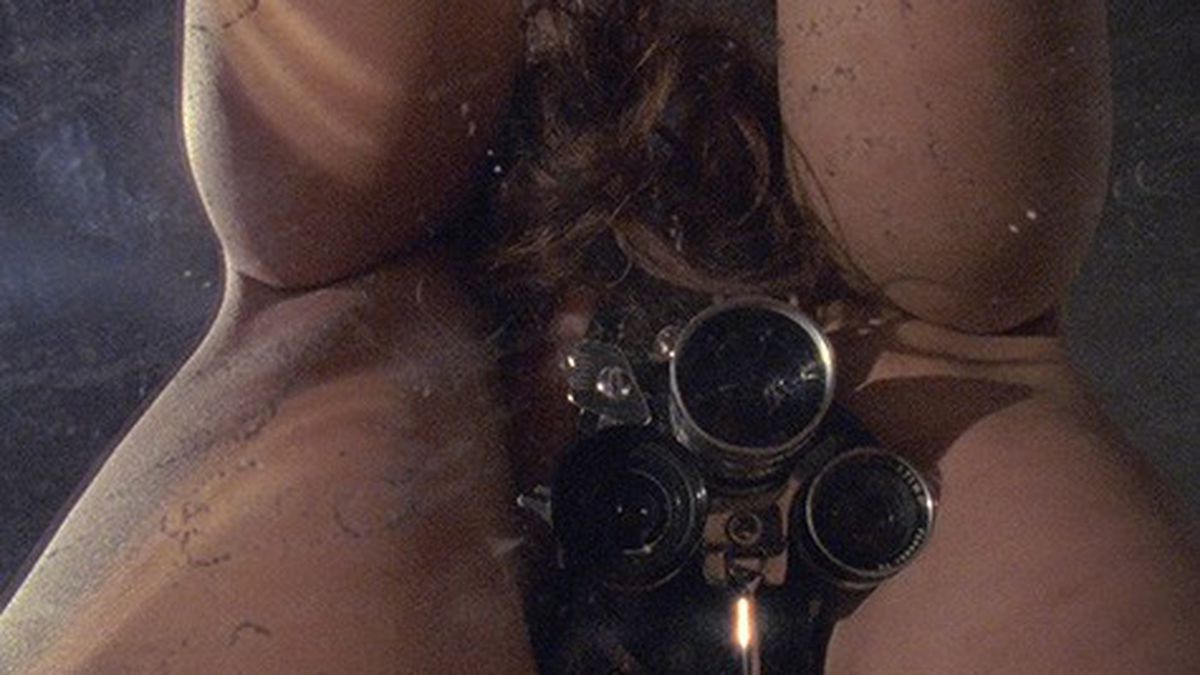Late one recent weeknight, four local filmmakers connected a fog machine and a 16mm projector to a portable power generator at the mouth of a cave. It was pitch-black except for the dim luminescence of an LED headlamp — until the projector, loaded with a film loop, beamed scratchy circles down the shaft, mist and smoke flickering in the conical field of light.
The filmmakers stood transfixed — gazing from within the cave towards the lens for nearly an hour, murmuring their delight — and eventually one of them said, “I think we’re in a portal.”
The speaker was Oakland artist Tooth, and his companions were fellow local filmmakers and video artists Zachary Epcar, Samuel Breslin, and Zach Iannazzi — all four organizers of this weekend’s first-time experimental film festival, Light Field. They were testing conditions for the festival finale, a display of “solid light films” by Anthony McCall that assert projected light as their subject, rather than moving images splashed on a surface. (The test loop, however, belonged to Tooth.)
Non-narrative, abstract, and smitten with the possibilities of celluloid, the quietly mesmerizing demonstration showed the profound rewards of challenging film programming — an effect the Light Field founders wish to sustain through eight screenings of over fifty works at four San Francisco venues this weekend.
Light Field occurs November 11–13 at longstanding Mission District arts spaces and movie houses The Lab, Artists’ Television Access, and Roxie Theatre (along with the cave, the exact location of which they asked not be published). The lineup includes fifty-two works by an international cast of nearly as many filmmakers, mostly chosen by the organizers from over four hundred submissions. (David Dinnell, until recently head of the storied Ann Arbor Film Festival, guest curated two programs.)
The inclusions are meditative and brash, messy and formally austere. Kimberly Forero-Arnias’ Resin, a world premiere, savors the ambiguity of fleshy surfaces, colliding womblike imagery and technological interference. Malic Amalya and Nathan Hill’s Vaseline follows a leather-daddy through factory ruins, remembering a lover as cop radio mingles with synthesizer garble. And Vanessa Renwick’s Toxic Shock, a response to surviving Toxic Shock Syndrome, tracks the concoction of a visceral Molotov cocktail, complete with a tampon saturated in a clear glass of gasoline and blood drawn from the vein. Renwick asks, “What will you do in defense of your body?”
Others are quietly contemplative. Caroline Key’s subtly probing Speech Memory depicts a daughter interviewing her father, a Korean man assimilated into Japanese society at birth who later returned to his native country. Hay Algo Y Se Va, also by Forero-Arnias, emphasizes beguiling gestures and expressions in choppily edited family footage, suggesting personal burdens and repression. And in Scott Stark’s single-shot Hotel Cartograph, the camera — fixed to a cart and angled downwards — captures carpet patterns and elevator floors as viewers’ visual orientation succumbs to vertigo.
(Hotel Cartograph, like the late Peter Hutton’s New York Portrait, Chapter 1, is one of a handful of historical works rented from experimental film distributor Canyon Cinema.)
The four organizers recalled how after an event early this year at Tooth’s West Oakland screening series Black Hole Cinematheque, a spontaneous conversation yielded the core of Light Field’s charter: all works shot on film and shown on film, all participating artists compensated, no outside funding, and no submission fee. They also decided not to limit submissions to only recently completed work (another deviation from festival convention), which helped increase and diversify proposals.
The principled position — paying participants but not crowd-funding or seeking institutional support, lest conditions impact their programming — turned out to be practical, they explained, in large part because of sympathetic venues. Admission to events ranges $6-$10 (or $25 for a festival pass), and all of the venues have either donated space or accepted a cut of the door — no rental fee upfront.
“Most film festivals say they’re submission-based, to seem sort of populist, when they’re actually soliciting a lot of the work — so they’re charging people to submit films that maybe aren’t even watched for consideration,” Tooth said. In contrast, the Light Field organizers watched over four hundred submissions together, usually after cooking a shared meal.
“Film festivals tend to be too much the work of a single auteur curator. One positive aspect of that is a clear vision, but we wanted this to be more of a multi-vocal, collective action,” Tooth continued. “We have a lot of disparate or even competing visions, so harmony, or the right disharmony, can be hard — it’s been an experiment.”

















